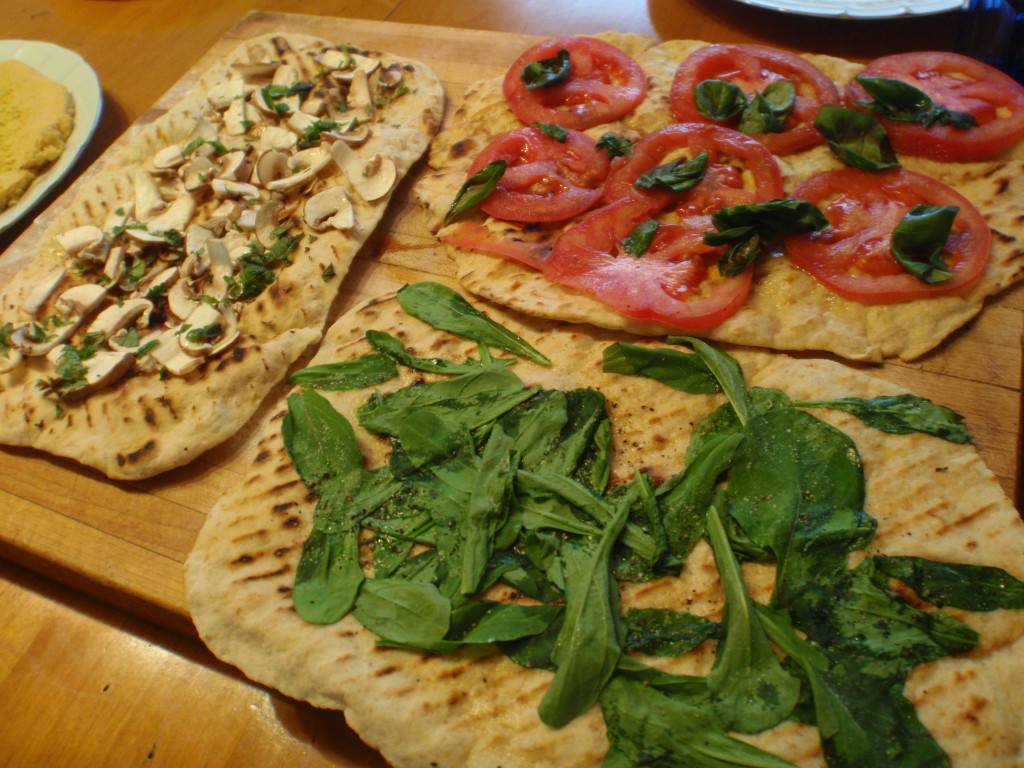On Sunday supplement
Food and Wine
Let’s start with a little history. You all remember the Roman Empire, occupying the Holy Land and all that. There was a kid, started a religion… long story. Here’s the thing, there was this local flatbread, called matzoh, and while the Roman soldiers liked it, they thought it lacked a little… focus, or hearth – that is, matzoh was traditionally just baked on hot stones, and the Romans were used to things coming out of a wood-fired oven. The story is really lost in antiquity, and this is more legend, but, what the heck? Some historians claim it came from the neighboring Greek Empire, where a flatbread called plankutos was used essentially as a dinner plate. A little work on the recipe, a little charring in the fire, picea as it was described in Latin – meaning a charred crust – and soon Roman housewives, especially those from the poorer parts of Italy around Naples, were making the pre-cursor to Neapolitan pizza, generally considered to be “the classic”. The dough was made from flour and olive oil or lard, and topped with cheese and herbs just to give it flavor. Other historians claim the name comes from the Italian verb pìnsere, meaning to press something out – let’s face it, we’ll probably never know.
Tomatoes, you might remember, didn’t come along until they were brought back from Mexico and Peru – post-Columbus, in 1596 – half a millennium after the “invention” of pizza. Even then, they were only slowly accepted, as, at first, they were thought to be poisonous (originally the plant was brought back as a decorative household plant). Pizza was considered a peasant dish until Queen Maria Carolina of Naples convinced her husband, King Ferdinand IV, to serve it up – more or less as a lark – at a state dinner in the late 1700s.
While grilled pizza was introduced in the United States at the Al Forno restaurant in Providence, Rhode Island by owners Johanne Killeen and George Germon in 1980, it was inspired by a misunderstanding in translation that confused a wood-fired brick oven with a grill. Grilled pizza did exist prior to 1980, both in Italy, and in Argentina where it is known as pizza a la parrilla. It has become a popular cookout dish, and there are pizza restaurants that specialize in the style. Grilled pizza is created by taking a fairly thin irregularly-shaped sheet of a yeasted pizza dough, placing it directly over the fire of a grill, and then turning it over once the bottom has baked and placing a layer of toppings and a drizzle of olive oil on the baked side. Toppings are generally as thin as possible to ensure that they heat through, and chunkier toppings such as sausage or peppers must be precooked before placing on the pizza; it is not uncommon to add garlic, herbs, or other ingredients to the crust to maximize the flavor of the dish. Grilled pizza can also be cooked on a stove-top grill or griddle.
Grilled Pizza Dough
90 grams bread flour
4 tablespoons whole wheat flour
1 tablespoon cornmeal
¼ teaspoon sugar
1 packet dry yeast
240 ml warm water
1 tablespoon olive oil
Mix water, sugar and yeast together and let sit until the yeast proofs. Mix in remaining ingredients and knead until smooth and elastic. Cover and let rise in a warm place until double in volume. Punch down, wrap in plastic, and then ideally chill this dough for a minimum of one hour, up to 3 days.
Roll out very thinly – less than ½ cm thick and then place directly onto a very hot grill (outdoor or indoor). Cook until the bottom is browned, then flip. Brush the top with olive oil, top with toppings, and cook just until the crust is done and the toppings are warmed. This type of pizza is best with very thinly sliced, simple ingredients, often greens and some sort of cured meats (mortadella and arugula is a favorite) – not piled up. It doesn’t lend itself to cheese pizzas (although a grating of parmesan is common), though if you wish to make one, place it onto a baking sheet after briefly cooking the second side on the grill – just enough to lightly brown it – then top the pizza and then stick it under the oven to melt and brown the cheese.
A series of recipes and articles that I started writing for the Buenos Aires Herald Sunday supplement, Food & Wine section, at the beginning of 2012. My original proposal to them was to take local favorite dishes and classics and lighten them up for modern day sensibilities. We’re not talking spa or diet recipes, but at the very least, making them healthier in content, particularly salt, fat and portion size. As time went by, that morphed into a recipe column that, while emphasizing food that is relatively “good for you”, wasn’t necessarily focused on local cuisine. At the beginning of 2013 I decided to stop writing for them over some administrative issues, but it was fun while it lasted.
